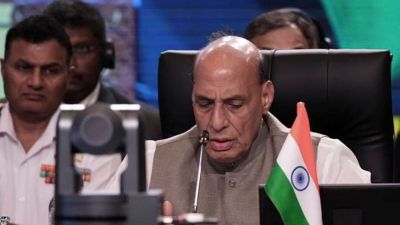RBI jacks up rates,pegs down growth
RBI has opted to move aggressively to tame inflationary pressures at the cost of even impacting growth
The Reserve Bank of India has opted to move aggressively to tame inflationary pressures at the cost of even impacting growth.
The central bank raised key policy rates by higher-than-expected 50 basis points (bps) to rein in any further demand side pressures and sustain growth in the medium-term by containing inflation in a move which,bankers and industry said,is set to push up interest rates on home,auto and corporate loans across the board and impact not only demand but also investments.
However,theres relief for millions of savers as the RBI has decided to increase the savings bank deposit interest rate from the present 3.5 per cent to 4.0 per cent with immediate effect in order to compensate depositors who are hit by high inflation. The RBI has promised to deregulate saving bank deposit rates and a committee is looking into the modalities.
Making funds expensive for banks,the RBI raised the repo rate lending rate of the central bank from 6.75 per cent to 7.25 per cent. The reverse repo rate,determined with a 100 basis point spread below the repo rate,will also go by a similar margin to 6.25 per cent.
Taking a cue,banks have started hiking rates with IDBI Bank first off the block with a 50 bps hike in both lending and deposit rates.
Others are expected to hike rates in the coming days.
Markets and most analysts had factored in a 25 bps hike in policy rates,but the aggressive move by the RBI caught many off the guard with the Bombay Stock Exchange Sensex plummeting 463 points to 18,534.69 in a sell-off led by interest rate sensitive sectors like auto,real estate and banking.
Unveiling the Monetary Policy Statement for 2011-12,RBI Governor D Subbarao said: Inflation has persistently remained much above the comfort level of the Reserve Bank. The sharp increase in non-food manufactured product inflation towards the latter part of the year suggests strong underlying demand pressures,which are helping producers to pass through input price increases.
The impact of monetary tightening already undertaken by the Reserve Bank is still unfolding. However,considering the overall inflation scenario,there is a clear need to persist with the anti-inflationary stance,Subbarao said.
The RBI also lowered the growth estimate for the year to 8 per cent. While the growth momentum remained relatively firm during 2010-11,signs of moderation emerged in the latter half of the year,particularly with respect to capital goods and investment activity. Keeping in view the domestic demand-supply balance,the global trend in commodity prices and the likely demand scenario,the RBI has projected baseline WPI inflation for March 2012 to be at 6 per cent with an upward bias.
Industry chambers like Confederation of Indian Industry and FICCI said the increase in repo rate by 50 basis points will have an adverse impact on investments and on growth. The cost of funds for banks is expected to rise,with upward bias on interest rates for both deposit and credit, SBI chairman Pratip Chaudhuri said.
Containing inflation and anchoring inflation expectations is clearly the primary focus of the Reserve Bank of India in its Monetary Policy Review for fiscal 2012. Price stability has taken precedence over growth. This is however necessary to maintain a sustainable growth momentum in the economy over the medium term. However,I think the large part of increase in interest rates will have to be passed on to the borrowers this time, ICICI Bank MD and CEO Chanda Kochhar said.
In another significant move,the RBI has decided there will be only one independently varying policy rate the repo rate. The transition to a single independently varying policy rate is expected to more accurately signal the monetary policy stance. The reverse repo rate will continue to be operative but it will be pegged at a fixed 100 basis points below the repo rate. Hence,it will no longer be an independent rate, the central bank said.
The Reserve Bank began exiting from the crisis driven accommodative policy in October 2009. Since then,the cash reserve ratio (CRR) has been raised by 100 basis points. Policy rates have been raised eight times the repo rate by 200 basis points and the reverse repo rate by 250 basis points. The effective tightening in policy rates has been of 350 basis points as the liquidity in the system transited from a surplus to a deficit mode.






- 01
- 02
- 03
- 04
- 05

























